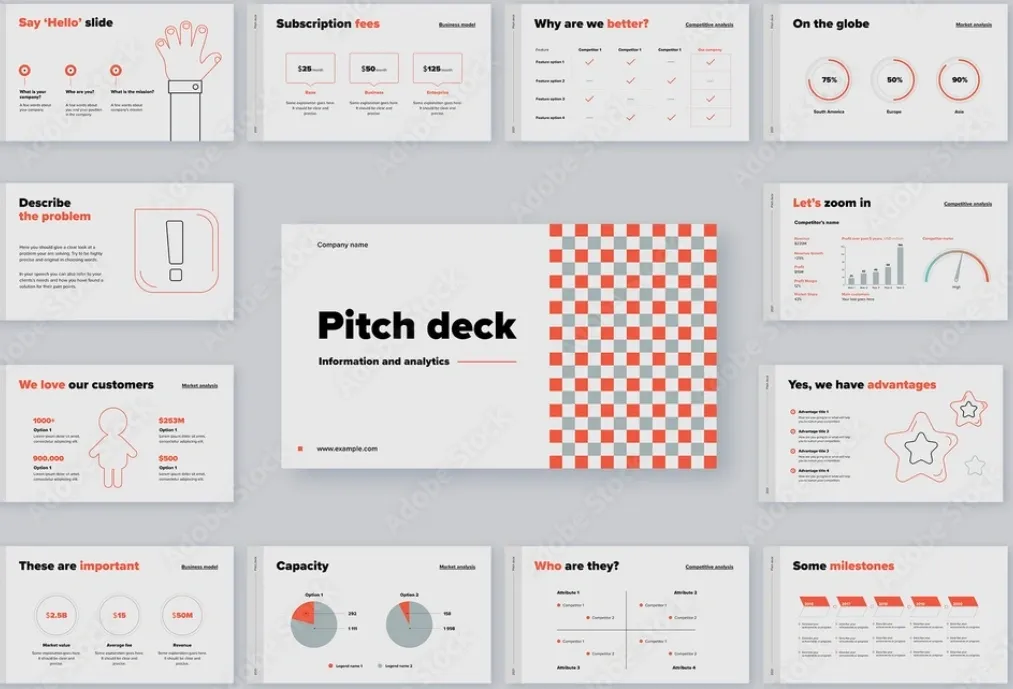Pitching your startup idea in a room packed with investors can be a nerve-racking experience, especially if you’re going to do it for the first time! A pitch deck, for many, is a presentation, generally presented over slides prepared by an entrepreneur pitching their idea to investors for fundraising.
But, is that all?
Will creating relevant slides of what your product is about, help you out in securing investments successfully?
No! The appropriate flow of your fundraising pitch deck plays a significant role in striking the right chord with your potential investors. Presenting your ideas via different slides in a successful pitch deck is what helps you get the flow.
With this article, we are going to answer the question which is common among all the newbie entrepreneurs. This blog intends to guide you in creating your perfect fundraising pitch deck. Let’s get started!
List Of Factors You Must Include In Your Pitch Deck
Every business idea is different and so is their need for investment! Here are a few essential pointers for entrepreneurs who want to generate a buzz and have the attention of their potential investors.
- Vision and Value Proposition
The vision and value proposition statement highlights a one-sentence overview of the core values of your business. It also highlights the value that you deliver to your customers. We recommend you keep the proposition short and simple.
To give you an idea, your proposition should be like a Tweet, described in 140 characters or less, in a manner that it is understood by everyone. It’s also a common factor among tech companies to compare their value proposition with other well-known brands.
For example, some pitches include lines like:
“We’re the Uber for Pets”
“We’re the Netflix for Video Games”
However, you should be smart while drawing such comparisons as you’re just using high-profile brands to mark your comparison.
2. The Problem
This slide should be talking everything about the audience having the problem and how your solution aids the situation. While you can talk of the currently available solutions in the market, don’t waste too much of your seconds in sketching a competitive landscape.
Ideally, tell a relatable story, but only to define the problem. Remember, the more you make your problems real, the better your investors can understand and relate to your business and goals.
3. Solution
Following the problem slide, you can address the solution to your problem. The pitch deck should be providing solutions your company provides. Further, the slide must also present why your solution stands out from others in the market.
4. Target Market & Opportunity
This slide can be used to talk about your ideal customer and the numbers related to them. Try talking about the total market size and your plans to position your brand amidst the competitive market.
Use the opportunity to give your investors an idea of the market size and tell them of the ways you are solving the problems at a scale. If it makes sense, try dividing your market into segments addressed under different marketing types and product offerings.
5. The Expected Revenue
You cannot think of a potential investor in your business if they don’t see an expected income of their invested money! This is the slide where you need to present them with all the inputs around expected revenue generated from operations, followed by the percentage growth they can expect from your operations.
Here’s a trick: Always try to highlight why your revenue model is justified and how your solution is more cost-effective!
6. Traction and Validation
In case you have any previous customers or early adopters to your business model, use this slide to talk about it! Investors like to see some proven aspects of a theoretical business model as it reduces the risk and adds to the proof validating your solution.
However, you could also use this slide to talk about your upcoming events, milestones, or goals in the short term.
7. Marketing & Sale Strategy
So how do you plan on getting your customers’ attention and how does the sales process look? Ensure that you use this slide to outline your sales and marketing plan. Try and detail the key tactics which you’ll be using to win customers.
Tips to create a solid pitch deck:
- Present your pitch deck with a short yet interesting story that shows your passion for the business.
- Skip bullets around places that do not share a story.
- Try using larger fonts in your presentation and use words with precise word limits.
- Use catchy graphics and images whenever possible.
Take It Easy!
Finding and converting customers can prove to be one of the biggest challenges for a startup! Therefore, it’s important that you have a solid idea of how your idea is working and might look like in the future. With this, we hope you are ready to create the perfect pitch deck for your startup journey. All the best!


